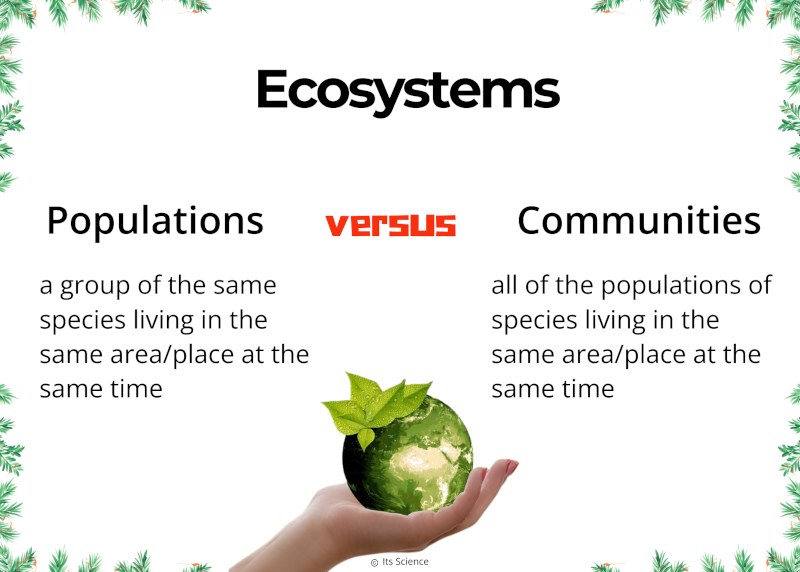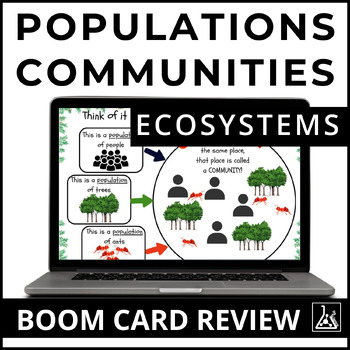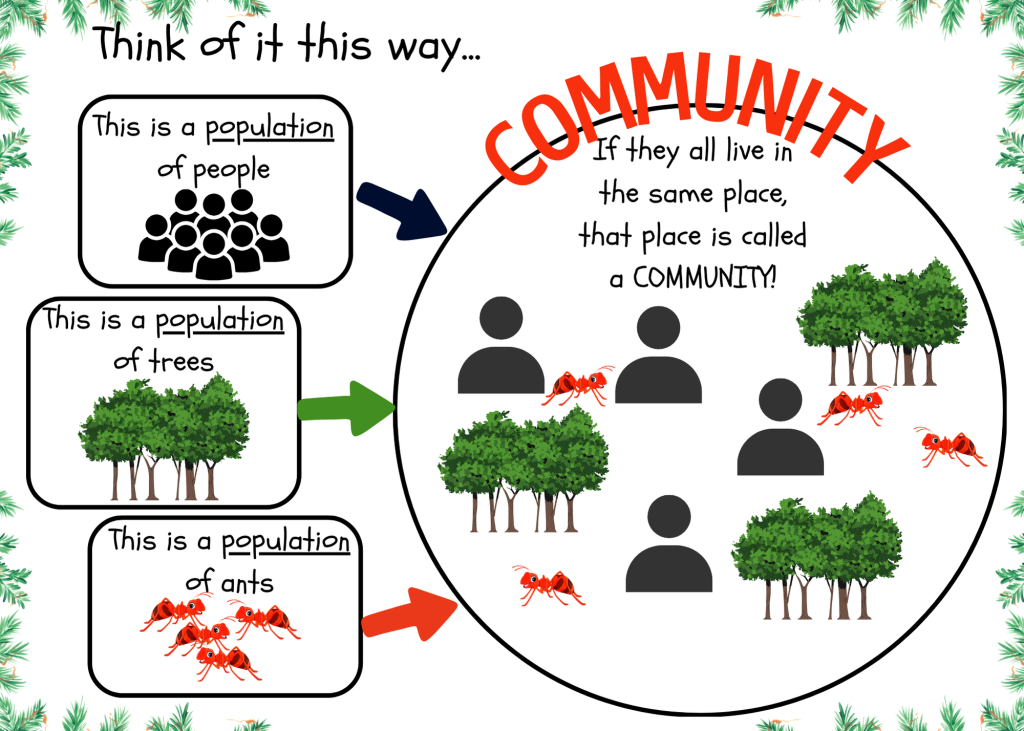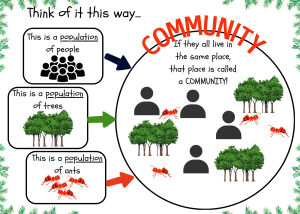Introduction
In talking with a fellow teacher, out of curiosity I asked what topic she was going to teach next. “Ecosystems,” she said. She went on to explain how one issue she had with teaching the topic was getting students to key in on the differences between populations and communities… populations versus communities.
As with any science, vocabulary is key. I have told my students over and over that science is a foreign language. Science concepts come easily if you can wrap your head around the vocabulary.
Taking all of this to heart, I decided to tackle the ecosystem terminology of populations versus communities. Of course, I wrapped it all up in a fun and engaging activity.
Populations versus Communities – Vocabulary Confusion
Elementary students face the problem all students encounter when dealing with science…science words/vocab. For this activity I developed for her, the target was populations and communities.
Looking at the definitions, you can see the repetitious wording could create issues with student understanding.

Students would see the wording “species”, “same area or place”, and “same time” which can lead to science terminology confusion. Without the proper distinction between the definitions of populations versus communities, you have a recipe for potential confusion.
Tack on the remaining terms found when teaching ecosystems (niche and habitat), and you can easily see why students would become confused. A lot of terms to digest and without understanding them, their brains become muddled and there is a chance they will shut down. Not a good option for the science teacher.
A Bit of Research and Personal Observations
Though the vocabulary of ecosystems isn’t overly difficult, building correct mental images of each term is central to the understanding of the overall picture.
After looking at the definitions for populations and communities as provided in the state standards, it became clear that science teachers would need help emphasizing the distinction between those terms. Thus, the populations versus communities dilema.
Defining the Goal
My goal focused on how to help students conceptualize these terms to get to a “eureka” moment where the ideas of Ecosystems became clear.
Developing the Product
To help achieve that, it is important to drill the terms (populations & communities) and do so in an exciting and engaging way. Failure to attract and hold students’ attention would defeat the drill practice and potentially sabotage the students’ understanding which could domino the whole learning process for ecosystems.
The teacher I consulted mentioned in our conversation that her students (and she) really enjoyed using Boom Cards. Boom cards are great for teachers in that they allow students to check themselves (they’re self-grading) as they progress through a deck. And, that feature is a boon for overworked teachers.
Feedback
When presented with the final product, the teacher I talked with was quick to say that the wording and graphics were age-appropriate and that she would definitely put it to use.
At present, I have not had feedback from its use though I am confident that it will work well.
If you would like to use the product and provide feedback, I am happy to accommodate some readers.
Tips for Teachers
As you are well aware when teaching ecosystems, or any science topic, building on prior knowledge helps set a positive and firm foundation for success.
How you approach the topic will vary depending on the school district. You could start with the term Ecosystem and move to the finer points or reverse the process.
After instructing students about populations vs communities, you can use the Boom Deck to hone their understanding of the distinction between the terms. However, when it is used could vary.
You could use the activity as a(n):
⭐ Introduction to ecosystems
⭐ preassessment (to see how many students already had a grasp of the concepts)
⭐ Review and reinforce activity during unit instruction or before assessing
⭐ bell ringer
And more
Conclusion
The success of any science instruction depends on the vocabulary. Remember what I said, “Science is a foreign language.”
With a firm grasp of science terms, students are assured a greater level of success in understanding the topics. And, with a firm grasp of the difference between populations and communities, the understanding of ecosystems is made easier.
This is what the Ecosystems: Populations and Communities Online Review Activity is designed to do. It will help your students understand the population vs community confusion that so often happens.

This is the final product. Click the image to learn more.







